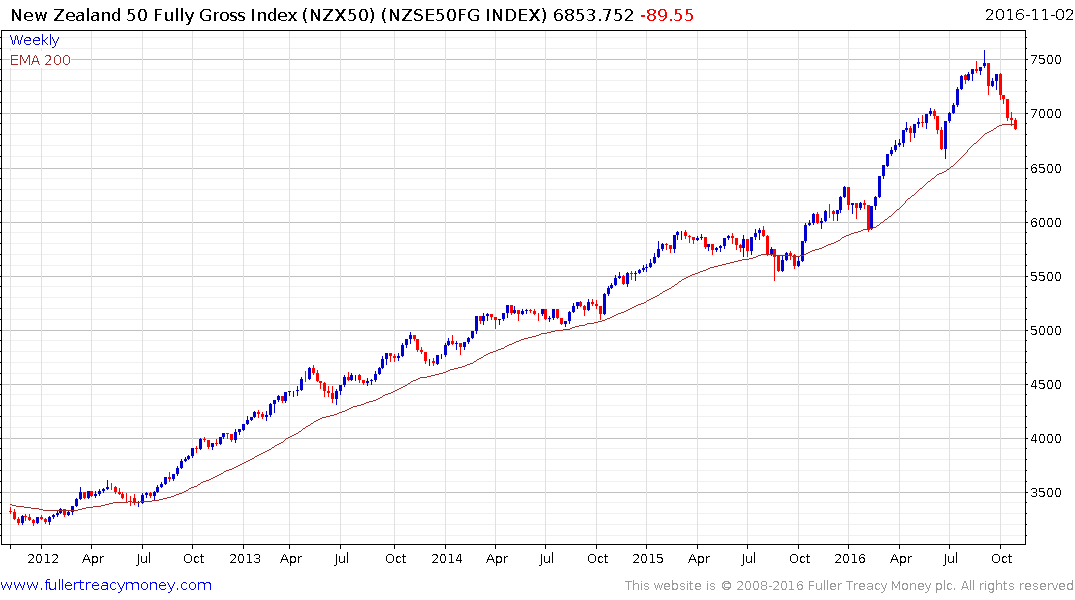Aussie dollar's surge may signal good times for global economy
This article by Narayanan Somasundaram for the Sydney Morning Herald may be of interest to subscribers. Here is a section:
Goldman Sachs and the Commonwealth Bank say inflation has bottomed out, while traders are starting to speculate that policy makers are done with cutting interest rates. The world's fifth-most traded currency climbed for a third-straight day on Tuesday after the RBA left its benchmark interest rate unchanged and said consumer-price increases are likely to pick up.
Australia's economy sits astride emerging and developed markets, making the currency a favoured bellwether for worldwide growth. As the biggest iron-ore exporter and a major supplier of coal, wool, gold and liquefied natural gas, the country's fortunes are wedded to those of China.
But it's about more than just raw materials - tourism and education are also major exports - and the Aussie is the highest-yielding AAA currency. That combination helped it lead a resurgence in developed markets in 2009 as the dust settled after the GFC.
If inflation has indeed bottomed and there are increasing signs globally that it has then it is unlikely the RBA will cut interest rates further. The Australian Dollar has been ranging with a mild upward bias for nearly four months and firmed again today from the region of the trend mean. A sustained move below 75¢ would be required to question medium-term scope for additional upside.
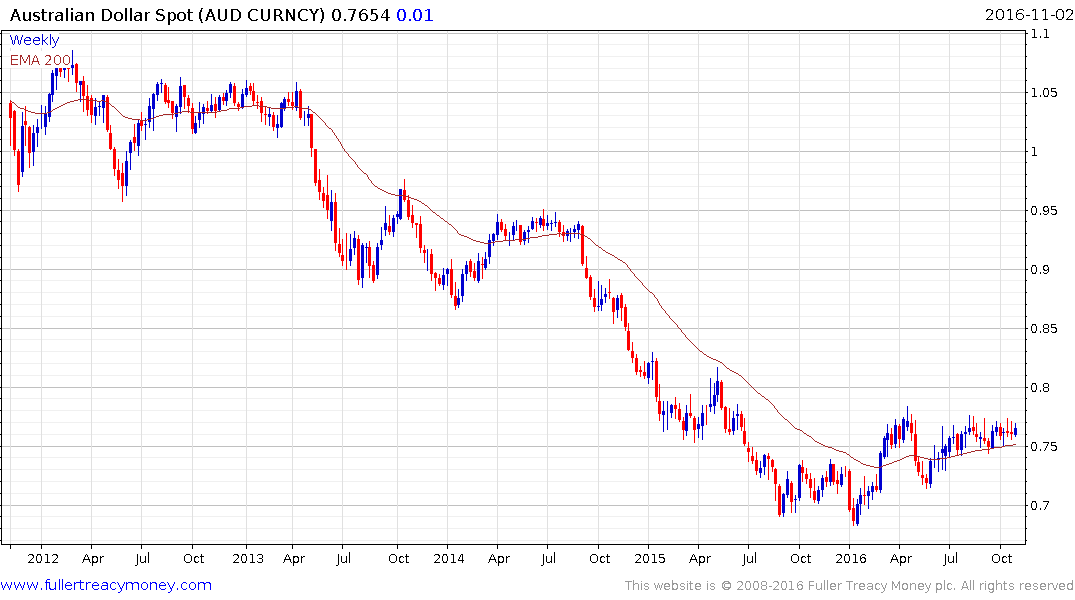
The S&P/ASX Finance Index which is comprised of banks, insurance and mortgage companies hit a medium-term peak early last year and trended consistently lower until February. It has been ranging with a mild upward bias for most of this year but has encountered resistance again in the region of 6200 and will need to hold the progression of higher reaction lows, currently near 5700, if potential for continued higher to lateral ranging is to be given the benefit of the doubt.
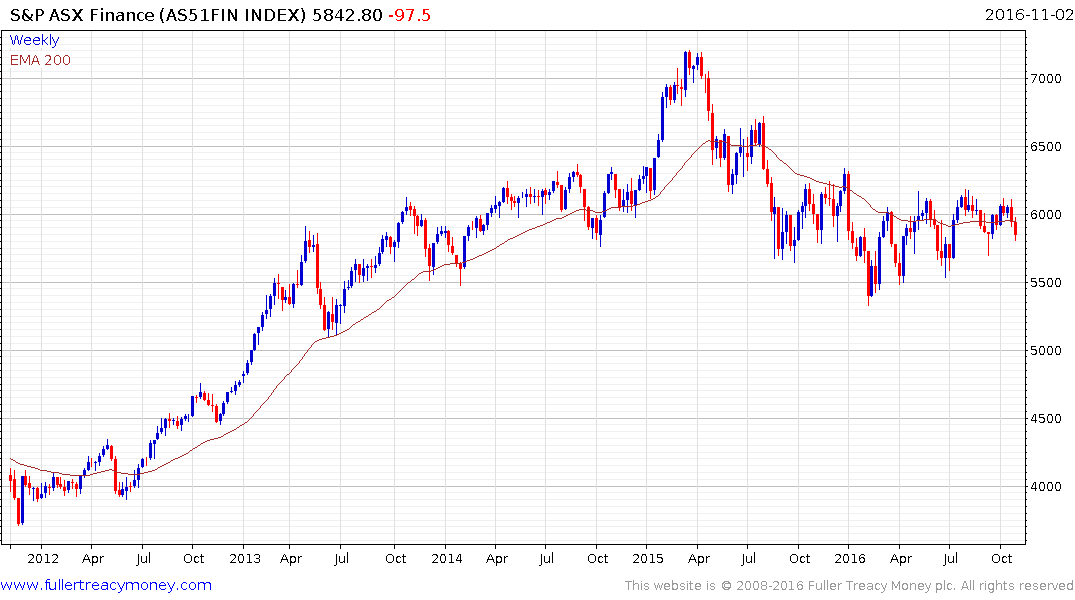
The Finance sector represents 37% of the wider S&P/ASX 200 so while the broader measure has outperformed it is now also testing its progression of higher reaction lows.
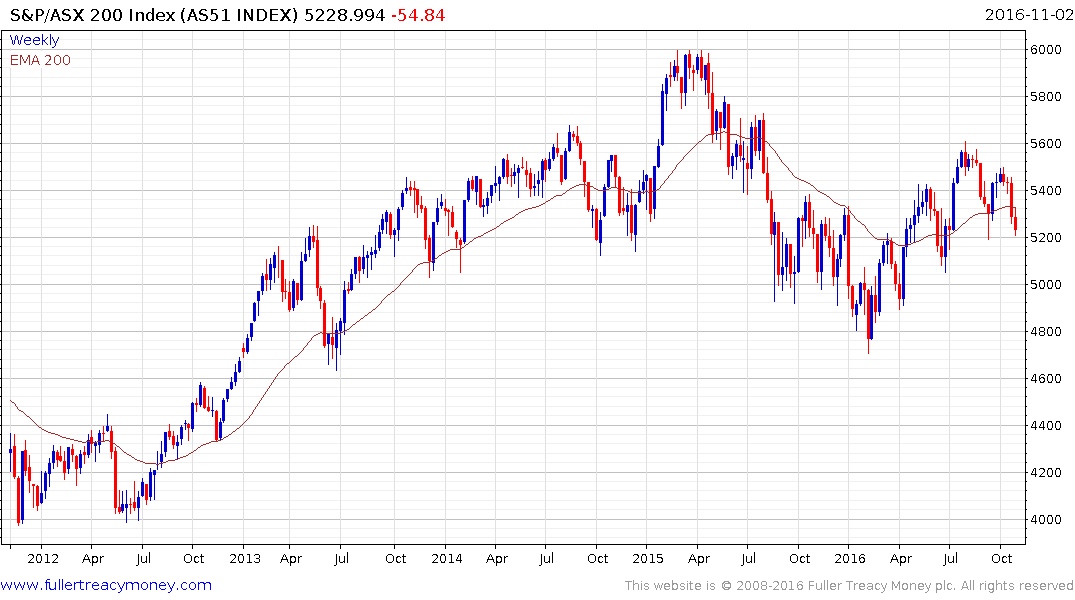
The rebound in the Materials sector has been in large part responsible for the S&P/ASX 200’s relative strength and it will need to hold its 10-month progression of higher reaction lows if the uptrend is to remain consistent.
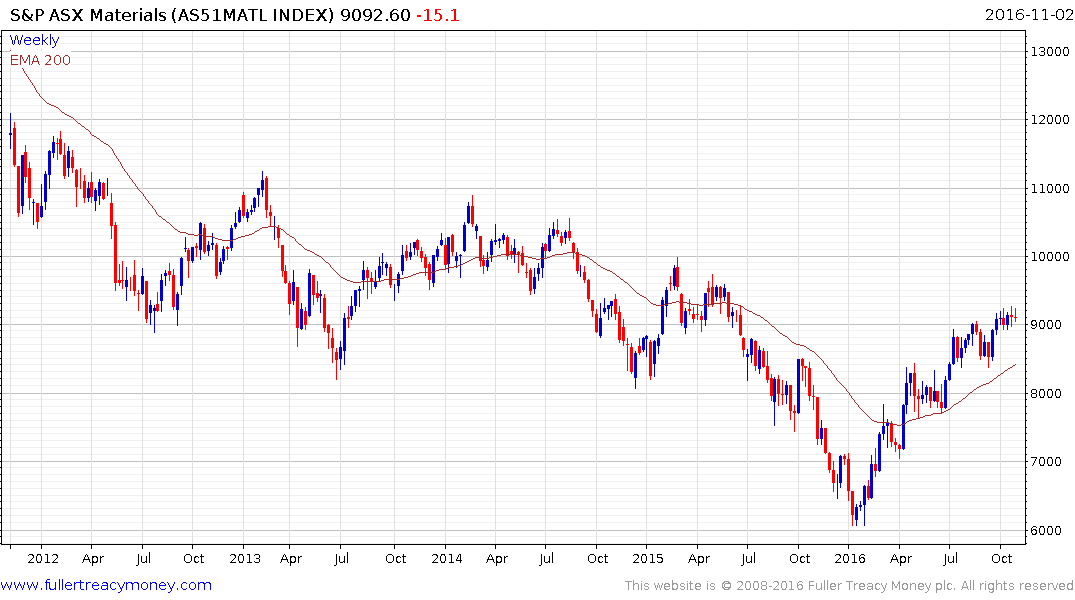
The New Zealand Fully Gross 50 Index has been remarkable for its relative strength over the last year but it needs to find support soon if top formation characteristics are to be avoided.
